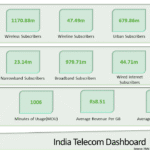Let the Digital India marquee initiative be aligned to the framework as laid by the constitution of India.
Digital India is an ambitious marquee initiative with the vision of transforming India into a digitally empowered society and knowledge economy. The key stakeholders involved – government, industry, academia and citizens primarily see this as an infrastructure building and services enablement programme with the mission of more direct governance.
Undoubtedly this is a huge achievement. The government has been regularly reviewing the programme and widening and deepening its scope and impact. Even while it is a work in progress, as the magnitude of implementation is humongous, the impact has been significant bringing in a lot of relief to the citizens and adding to the transparency in governance. The 9 pillars envisaged in the Digital India programme overarch the entire implementation of digital technologies making it an all-inclusive holistic initiative impacting over a billion lives. This is an unprecedented implementation of any digital initiative worldwide.

The essence of India is in her constitution. The supreme law of the country that was adopted by the Constituent Assembly of India on 26th November 1949, absorbed the vision of the elders, a dream they had seen about how the country should look like.
Digital technologies, with every passing year are only becoming integral to our lives. While one off situation like covid-19 brought everything under the realm of digital, the thrust led by government and enabled by all stakeholders is only making it natural to our lifestyle. Digital is a way of living now. With 5G now live in the country after it was launched at IMC 2022 by the Honourable Prime Minister, India is at the threshold of an unimaginable digital transformation.
To see India as a Digital nation, a Digital superpower, it would be a great idea to restructure Digital India initiative by aligning it with the elements and structure of the constitution. The constitution of India is an exhaustive and extensive document that encompasses everything related to governance, citizenship and its various facets. This makes it’s the longest written constitution in the world!
The existing 9 pillar approach of Digital India is primarily addressing governance and the services that the government extends to its citizens. However, it may not be comprehensively covering all that is explained in the constitution. Evaluating the main elements of the constitution, there could be the following key aspects that Digital India mission should address and then layout its programmes and objectives to meet them.
- The soul of the constitution, preamble eloquently outlines essence of India. Justice, Liberty and Equality are essentials to our preamble. Digital technologies and solutions efficiently aid in fulfilling the resolve made in the preamble, which is a guiding passage for every citizen.
- The constitution defines and lays down the structure of governance, its key elements, relationship amongst them and the duties and powers they enjoy. While the present form of Digital India primarily addresses this, there is still scope for widening the horizon and making it all inclusive.
- Fundamental rights are very powerful and enabling rights that every citizen enjoys. Due to demographic diversity and the geographic expanse, a uniform implementation becomes challenging at times. Digital technologies can not only universalise the understanding but also provide tools in efficient empowerment through the fundamental rights by democratising access to these.
- The constitution also outlines duties and the responsibilities that come with citizenship for every individual in the country. Again, the digital technologies and applications can empower citizens so that they can rightfully perform their duties, thus adding to the nation building.
- There are certain defined institutionalised jurisdictions like panchayats, municipalities and other areas in the constitution. We may also need to look at our digital initiatives by these defined institutions. While there are programmes like smart city, fibre to panchayat, etc., it may be appropriate to envisage digital panchayat, digital municipality and other digital areas in line with the constitutional definitions.
- There are other important areas like elections, languages, etc., which the constitution gives us a framework about. The Digital India programme might need to include such elements also, though there are standalone initiatives around leveraging digital in these areas as well.
The purpose of this writing is not to suggest that there are any deficiencies in Digital India initiative. Rather, it is to suggest that the guiding umbrella vision for Digital India could be the constitution of India, which will bring in coherence across different implementations of the programme as well as while defining a broad framework, will allow for incorporating diverse nuances of the fabric of India. That is what precisely constitution does, integrate the country with one vision while allowing for preservation of demographic nuances peculiar to India.





